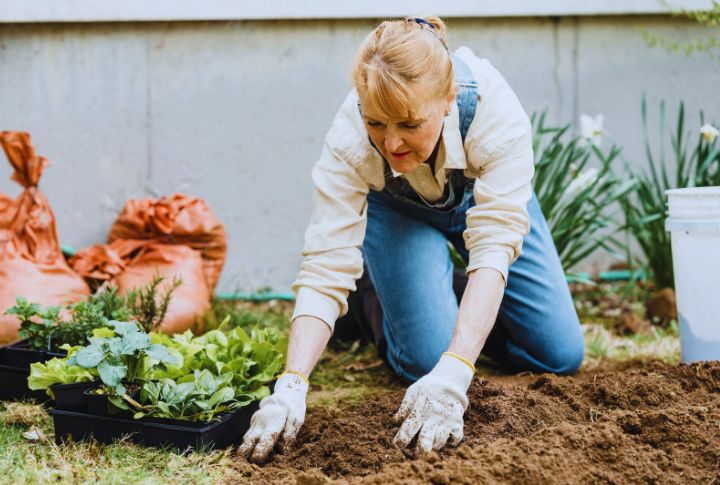
Every good story begins with a moment of stillness, and in gardening, that moment often arrives when your hands sink into the earth for the first time. The cool texture of soil between your fingers feels both grounding and ancient, as though you’re touching something that remembers everything. In that simple act of digging, you are no longer a bystander in life’s cycle but an active part of it.
Planting potatoes begins here, in the quiet rhythm of the soil. Each motion connects you to the patience of nature itself. You start to realize that this process is less about growing food and more about learning what it means to slow down and care for something that grows quietly, without spectacle.
Listening To The Right Season
Once your hands have remembered the language of the soil, the next step is learning the rhythm of time. Potatoes, like all living things, ask for the right beginning. The earth must be ready before you are. The ground should feel loose, not frozen, cool but not cold. When early spring sunlight stretches just a little longer each day, the soil whispers that it is time.
Many gardeners even say you can trust the dandelions to tell you when to start, as their golden blooms mark the balance between winter’s retreat and spring’s arrival. Instead of rushing ahead, you learn to wait for the world to open its hand first.
Preparing A Bed Worthy Of Growth
When the moment feels right, preparation begins. Potatoes love soil that is both rich and forgiving. Hence, a good bed starts with loosening the earth so roots can stretch and breathe. Working compost or aged manure into it adds nourishment that cannot be replaced by shortcuts.
There is satisfaction in this kind of labor. The repetitive movement of the shovel becomes almost meditative. Each turn of soil feels like a conversation between care and possibility. By the time you finish, the ground looks soft and ready, like a page waiting for words. In that readiness, you see how preparation itself becomes a quiet form of hope.
Planting Promises Beneath The Surface
With the bed ready, you move to the heart of the process. Potatoes begin as fragments of other potatoes, proof that new life starts with something small and imperfect. Cut your seed potatoes into chunks, leaving at least one healthy eye on each piece. Let them rest for a day or two so their cuts seal naturally.
When you lower each piece into the soil, it feels almost ceremonial. You space them evenly, a foot apart, then gently cover them with earth.
Nurturing What You Cannot See
Once the plants have found their rhythm, your role shifts from creator to caretaker. Consistent watering keeps the soil moist without drowning the roots. Pulling weeds becomes its own small ritual, a way to give the potatoes room to breathe. As you bend and work, your focus sharpens.
Over time, the stems grow taller, and you draw more soil around them, building small mounds called hills. These protect the forming tubers from sunlight and encourage new ones to grow. With each visit to the garden, you notice that your own worries feel lighter.
The Quiet Transformation
Midseason brings the most magical change. The green leaves thicken, and one morning, you notice tiny flowers appearing at the tops of the plants. They are soft and fleeting—white, pink, sometimes purple—but they mark the invisible progress happening underground. You do not see the potatoes forming, but you feel their presence in the fullness of the leaves.
These weeks are a reminder that much of life’s growth happens out of sight. You cannot dig up the soil to check on your progress without undoing it. All you can do is trust.
Reading The Signs Of Readiness
Eventually, the plants begin to fade. Their leaves, once vibrant, turn yellow and droop toward the earth. To an untrained eye, it might look like failure, but every gardener knows it means success. The plants have given all their energy to what lies beneath. The time for waiting is almost over.
You let the soil dry a bit before you dig. On the day you finally take up your fork or spade, the garden feels like it is holding its breath. The first lift of the soil is a small revelation, as beneath the surface, smooth, dusty potatoes spill into view. Each one feels like a reward earned through quiet effort rather than conquest.
Bringing The Garden To The Table
Cooking what you’ve grown completes the cycle. When you slice into a homegrown potato, you see the colors of effort turned edible. Roast them with rosemary, boil them for a simple mash, or fold them into stew; every method carries the same satisfaction.
It is not the recipe that matters most, but the connection between what your hands planted and what your hands now prepare.
The Circle That Never Ends
Digging up happiness, it turns out, is not about uncovering something hidden. It is about learning to see the beauty in what takes time. The soil does not rush. It does not complain. It simply holds life until you are ready to discover it again.
And when you do, you find that happiness is never far away.

